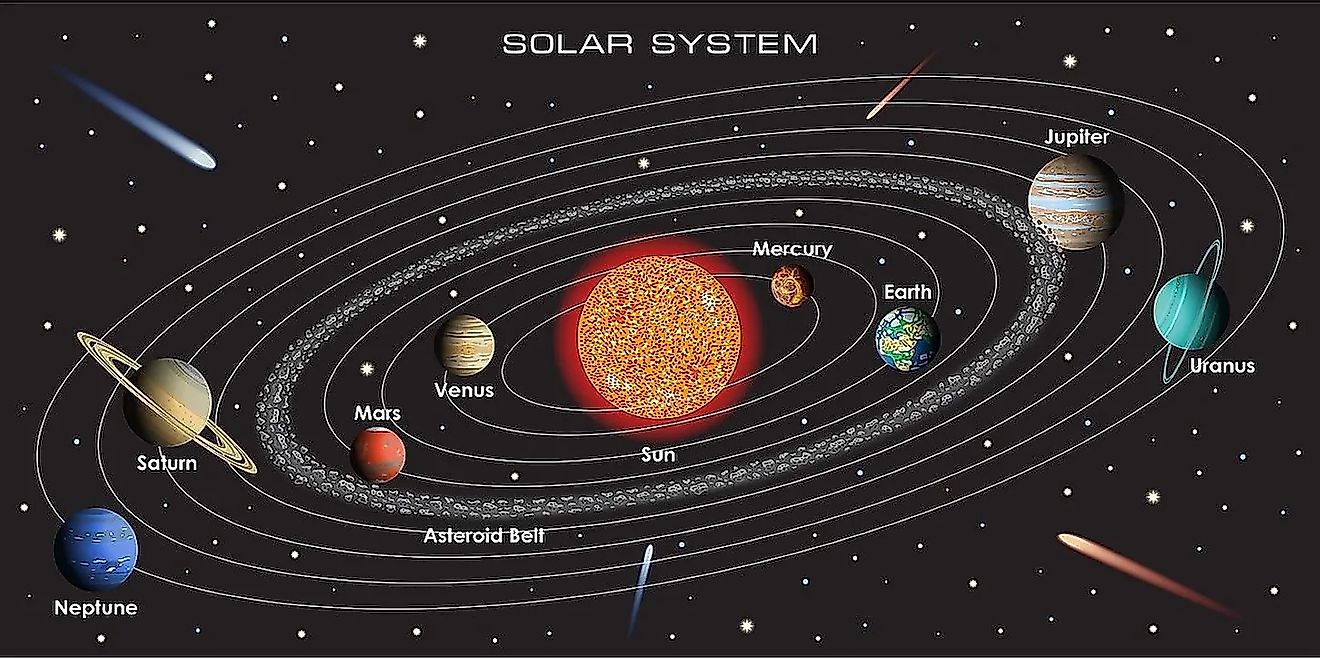
How Old Is The Sun?
The sun formed around 4.6-billion years ago, and all the planets formed within the next 100-million years. The age of the sun and the planets is one of the most widely accepted facts about our solar system, and the reason for this is that every line of evidence points to the same age. How is the age of the sun determined?
Finding The Oldest Thing In The Solar System
One way to determine the approximate age of the sun is to find the oldest object in the solar system. Fortunately, there are countless objects that formed along with the sun, such as asteroids, meteors, and planetesimals. These forms of planetary debris remain virtually unchanged for billions of years, and by using radiometric dating methods, scientists can determine their age, in turn directly telling us how old the sun is. Radiometric dating uses precise chemicals to determine the age of rocks, and it works by using something called a half-life. For example, carbon-14 dating is a reliable method for dating things like fossils, as carbon-14 is only present in organic matter. Carbon-14 has a half-life of 5,730 years, meaning that after 5,730 years, half of the carbon-14 will decay into another chemical, in this case, nitrogen-14. Every 5,730 years, another half will decay and so on. By determining the amount of carbon-14 present relative to the amount of nitrogen-14, scientists can determine the age of whatever it is that is being analyzed. While carbon-14 is a reliable method for determining the age of organic matter, it will not work for determining things that are billions of years old.
To find out when the sun first began to form, astronomers look for iron-60, a rare isotope of iron that is only produced during a supernova explosion. A supernova likely preceded the formation of our solar system, and the energy released from the explosion likely ignited the formation of the sun billions of years ago. Iron-60 has a half-life of 2.26-million years, wherein it decays into nickel-60. Like with carbon-14 and nitrogen-14, astronomers analyze rocks from asteroids and meteors to determine the ratio between iron-60 and nickel-60, which produces an age of around 4.6-billion years. Furthermore, other dating methods used on Earth and the moon have produced ages of around 4.5-billion years, offering further evidence that the sun is at least that old.
Lifespan Of The Sun

The sun is 4.6-billion years old, and astronomers believe that it is only about halfway through its life. We obviously cannot see into the future, and so how do scientists estimate the amount of time the sun will exist for? The process is actually rather simple, and it involves knowing how much fuel the sun has and rate at which it consumes that fuel. Like every other star in the universe, the sun is powered by the nuclear fusion of hydrogen nuclei in its core. When hydrogen is fused together, it produces helium and vast amounts of energy that power the star. So long as nuclear fusion is maintained within the core, the sun will remain a main sequence star. However, that fuel will eventually run out, and when it does, the sun will enter into the final stages of life. By knowing the amount of fuel the sun has and the rate at which it uses that fuel, astronomers estimate that the sun will continue fusing hydrogen in its core for at least another 4 to 5-billion years. When the sun does begin to run out of usable hydrogen, it will evolve into a red giant, eventually blowing off its outer layers. Those outer layers will form a shell of stellar material called a planetary nebula. Meanwhile, the core of the sun will collapse and become a white dwarf.







